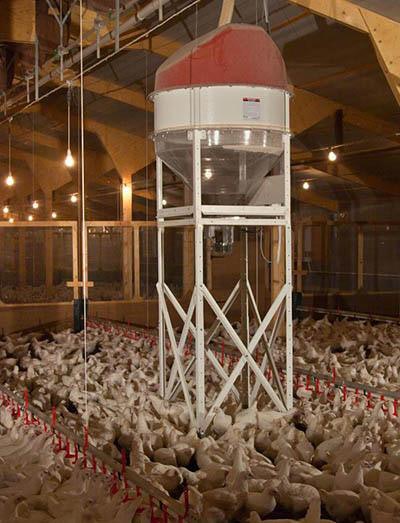
Research into alternative feeding programs finds poultry thrive on spin feeding
Spin feeding poultry may improve flock welfare and appeal to consumer expectations, according to a new study from the University of Georgia. But other alternatives intended to address potential welfare regulations require more work.
The study, which was funded by the U.S. Poultry & Egg Association, compared conventional, skip-a-day diets with 21-week photostimulation rearing treatment to birds raised on daily spin feeding and treated at 15 weeks. Andrew Benson, an assistant professor of poultry science at the University of Georgia and the author of the paper, said he initially hoped spin feeding and early photostimulation would prove to be viable alternatives to restricted skip-a-day feeding regimes, which have become subject to public scrutiny and animal welfare regulations.
“This is a welfare issue, especially in Europe, where producers are not allowed to restrict feed,” Benson said. “Usually regulations you see in Europe come over to the U.S., so I wanted to find a way we could reduce the severity of feed restriction, and put them on an advanced growth curve so they could get more feed.”
Spin feeding did, in fact, appear to offer benefits for the birds, Benson said. Flocks raised with daily spin feeding produced more uniformity in their final weights. While feed troughs can be dominated by the more aggressive birds in a flock, spin feeding forced more uniform feeding. Spin feeding also appeared to encourage more active feeding behaviors — birds spent more time eating, and were less “skittish” with human interaction.
Given consumer demand for birds fed more “natural” diets, Benson said spin feeding could be considered a viable commercial alternative.
However, birds subjected to early photostimulation experienced an increase in mortality. The birds achieved higher weights than anticipated at the 15-week mark, Benson said, but excessive weight may have contributed to an increase in undesirable eggs and the rise in mortality.
But Benson believes a more rapid growth curve could still hold promise, if future research finds new ways to manage appropriate diets for these birds. The early birds also exhibited lower cortisol levels, which suggests lower levels of stress.
“There is potential in that because they came into production a little bit over target weight,” he said. “So by changing the way they’re fed in production, we might be able to start production even earlier.”










